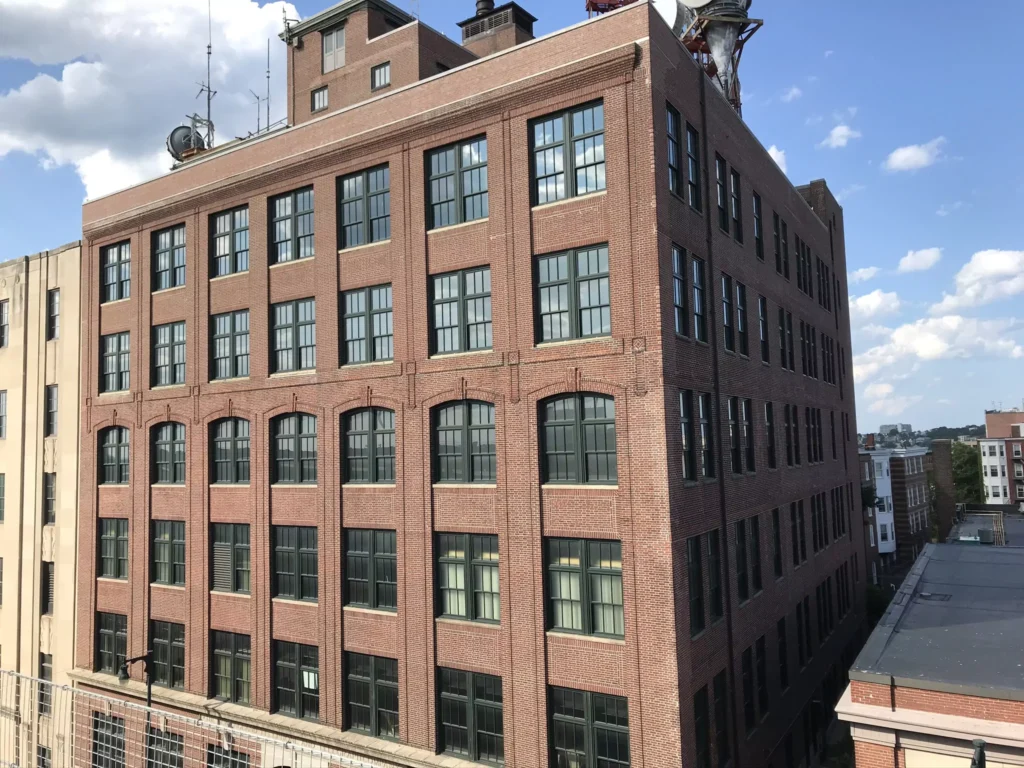By Nate Stevens, Partner, Broker, The Boulos Company
When discussing the current and future status of the commercial real estate market, no topic is more heavily debated and difficult to predict than the office market. With the pandemic-driven rise of working-from-home and subsequent implementation of hybrid work models, it could be months or years before we understand the full effect of this trend on the overall office market. If there’s one notion I’ve come to understand over the last couple of years, it’s that every company, every industry, and every office is different in how they are affected and how they implement a work plan. This makes it even more difficult to predict the change in office space needed per employee as compared to before the pandemic. However, one aspect most experts can agree on is that there will be a drop in the amount of office space required nationally – resulting in increased vacancy for office buildings, specifically older and outdated office buildings. I could write several articles about workplace trends alone, but for now, I’ll address a creative solution for vacant office buildings where the demand may not return anytime soon: residential conversions.
(Pictured is 45 Forest Ave in Portland, ME, an office building slated for residential conversion by Redfern Properties)
I recently attended the National Association of REALTORS Legislative Meetings in National Harbor, Maryland, where thousands of REALTORS and members gathered to discuss and advance the real estate industry through public policy. As President and representative of the Maine Commercial Association of REALTORS and a commercial real estate broker, there are often topics that do not relate directly to me, my clients, or our membership. This year, however, the commercial brokers and leadership in attendance often discussed the increase in vacant office buildings. On the other side of the hall, the residential attendees discussed the lack of supply and the desperate need for more housing. The obvious solution is to adaptively reuse vacant office buildings for residential purposes. While this isn’t necessarily a new trend, there is now a greater need for housing and more office vacancy, and these conversions are needed on a greater scale. Office buildings are, for the most part, single-use purpose-built buildings, and their large floorplates, life safety code, layouts, etc., do not easily conform to apartments, making these conversions expensive and difficult. Additionally, increases in construction costs over the last 24 months mean that only owners uniquely positioned in an office building will be able to afford a full conversion. One speaker at the conference stated that, on average, office ownership groups are invested in their office buildings at a cost-basis of around $150-$200/SF, depending on the market. To afford a full conversion, in light of current construction costs, an owner/developer needs to have a basis of closer to $75-$100/SF. Although every building and every project is different, there is likely a significant delta too wide for most developers to bridge by themselves. In the policy meetings held in National Harbor, the conversation included federal assistance as a solution to bridge this gap.
We discussed a bill that was introduced in Congress last summer as the first step in federal assistance toward addressing this issue. HR 4759, the Revitalizing Downtowns Act, expands the investment tax credit and creates a Qualified Office Conversion Tax Credit to convert unused office buildings into residential or mixed-use properties. This incentive, much like the Historic Tax Credit, offers 20% of the cost of conversion to be covered by the tax credit. In order for properties to receive this credit, they must be located in a Central Business District, have been used as office space for at least 25 years, and at least 20% of the residences in the proposed redeveloped building need to be affordable housing. This tax credit cannot be used in combination with other tax credits, including the Historic Tax Credit. This act works to create more housing in downtown areas, bringing renewed life to defunct and unused office buildings – all while addressing the housing shortage. Currently, this bill has been referred to the Ways and Means Committee for discussion and it’s likely far off from being signed into law, if ever at all. That being said, this is a significant first step in the right direction, and the conversation has reached a national scale as the effects of the pandemic on the office market become clearer.
In Maine, it’s difficult to predict what impact this type of tax credit would have, considering the Maine office market doesn’t quite parallel other markets. For one, most markets nationally have a higher vacancy in the urban areas versus suburban markets, hence this bill is geared toward downtown areas. Our data at The Boulos Company, taken from our annual Market Outlook and additional sources, shows that the suburban markets will likely experience a higher vacancy over the next couple of years than the downtown area, at least in Greater Portland. The significant increase in sublease space over the last 18 months is primarily concentrated in suburban buildings and could be seen as a precursor for the direct vacancy. Downtown Portland has already seen several smaller office-to-residential conversions and it’s the suburban buildings that will be prime for residential conversion if landlords can afford to do so. While I applaud HR 4579 as an important first step, local governments will also need to enact local legislation tailored specifically to their markets to enable more office to residential conversions. Additional ideas discussed in National Harbor included zoning reform to allow greater density, easing parking requirements, and creating local grants specific to life safety upgrades to assist in this costly component of conversations. While the Southern Maine office market is still relatively healthy and vacancy rates are well below the national average, we will need to see more conversations sooner than later in our towns and cities to solve for our own immediate housing shortage and impending office vacancies.
Originally published on May 31, 2022, https://boulos.com/office-conversion-projects-the-plan-to-make-them-affordable/

